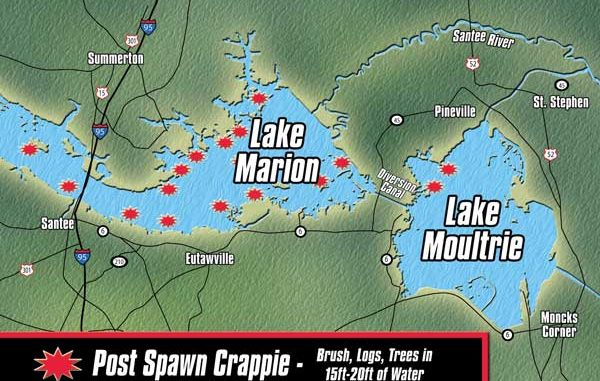
Fish deep and around brush to catch post-spawn crappie at Santee Cooper.
Fishing for post-spawn crappie on the Santee Cooper lakes has almost become a lost art — and not because of too few crappies; papermouths are still found in good numbers and certainly in slab sizes.
One reason seems to be that productive techniques have changed over the years, and many anglers have not changed their attitudes. Many still discuss fishing the old “log jam” and stump jumping — which will still produce some fish — but for post-spawn crappie, there is a better plan.
Pete Pritchard of Summerton is a long-time Lake Marion guide who has, through considerable hard work, maintained an excellent record of catching crappie. One of his specialties is catching slabs in huge numbers, even after the spawn is complete.
“Some people think that crappie two pounds and larger are a thing of the past, but that’s certainly not the case,” Pritchard said. “Actually, we still catch a lot of slab crappie throughout the entire year, some pushing three pounds or more. While the crappie fishery is not what it was even a few years ago in terms of numbers of fish, we still catch plenty of crappie.”
According to Pritchard, the fishing in June and into the summer can be just as good, if not better, than during the spring.
“Important factors are more stable weather and deeper fish,” Pritchard said. “With stable weather, once I get on a productive pattern, it’s easy to be consistent. Also, when we do have the occasional front blow through, the weather changes seem to have less impact on crappies when they are deep.”
Barry Pritchard, Pete’s son, also guides for crappie and admits to learning the basics from his father.
“I rely on the deep drops for crappie-fishing success throughout the year,” Barry Pritchard said. “Granted, I may find the fish at 12 feet one day and maybe at 15 feet the next day. This can be especially true during the early-spring months when the weather changes rapidly, but the fact that the fish hold consistently along the drops is the key I rely on.”
Barry Pritchard said he simply would not want to have to go crappie fishing this month without his depth finder. He usually fishes in 16 to 22 feet of water, but with brush rising above the lake bottom, he’s often fishing from 12 to 20 feet deep.
“The crappies have become so structure- and cover-specific that close is not really good enough,” he said. “The key is to fish around and in the brush or woody cover. You may catch a few fish by getting close to the good cover, but to consistently catch fish, you’ve got to pinpoint your target and fish directly in or over it. If you are not bumping the brush every now and then, you are not over the brush, or you’re fishing too shallow. Some fish will be down in the brush and some on top.”
Both Pritchards have plenty of places to fish. Not only do they scout out potential areas that are likely to hold large concentrations of crappie, they build brushpiles and sink them in what they figure to be prime crappie-attracting locations.
“Experience has taught me that crappie like certain types of drops, such as those that fall fairly quickly from shallow to deep water — not sheer drops, but a good strong slope,” Pete Pritchard said. “I’ll place cover along the areas that look like they’re ideal holding areas for crappie but are void of any other nearby cover. Generally, these places will produce excellent crappie fishing.”
Many of their hotspots are a long way from the shoreline. Using triangulation to get close and his depth recorder to pinpoint brush, Pete Pritchard locates his target like he’s got built-in radar.
“We’ll usually catch a few fish from each spot, but when the action slows, I quickly move to another place,” he said.
The Pritchards fish vertically, and when they feel a strike, they set the hook immediately, pulling the rod straight up to get crappie away from the brush They keep a long-handled net handy for the occasional slab crappie, since those are not easy to swing into the boat without having the hook rip out of the mouth.
“Another thing that I do is to locate these brushpiles in several different depths of water,” Barry Pritchard said. “I’ve learned that the crappie on Santee Cooper are very depth-oriented, and for whatever reason, they will have a depth preference on a given day. You’ve got to be able to find that depth of water with some type of cover that will congregate fish.”
“It’s just as important to not get too deep as it is to not get too shallow,” he said. “In fact, crappie will often feed up a bit if you’ve got the bait right over them, but they seldom feed down.
“That’s why it’s important not to change depths too much all at one time. I want to work my way down into deeper water in increments of a foot or so at a time, trying a couple or more different areas at each given depth before trying something else.”
Pete Pritchard said that sometimes it takes a while to find the pattern for the day.
“I work the crappie pattern out in a systematic manner,” he said. “While the process may seem slow to some anglers, once I locate the right depth, it doesn’t take long to put a bunch of crappie into the boat. I’ve got several similar places I can quickly get to and catch more fish.”
Once located, crappie on Lake Marion and Lake Moultrie can be caught using a number of different methods; both minnows and jigs can be very productive. The Pritchards use live bait and jigs effectively. If the action is slow on one, they’ll try the other.
“The whole process is to give the crappie what they want, where they want it,” Barry Pritchard said. “If they are in 16 feet of water and bite minnows better than a jig, then that’s what I will give them. My advice is to not get locked into a single mode of lure or presentation.
“I’ll certainly begin a day with what worked the previous day,” he said. “However, I’ll be quick to change and experiment if necessary.”
Pete Pritchard said you don’t have your own brush in the lake; fishermen can fish around exposed trees and snags that are in 20 feet of water, fishing 12 to 16 feet deep. He likes to stay in a spot for only a few minutes if there’s no action. Stay on the move until crappie are located.

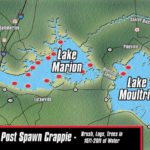
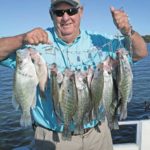
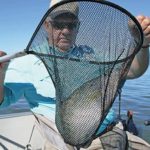
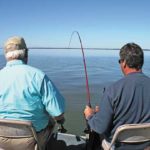
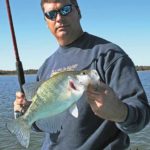



Be the first to comment